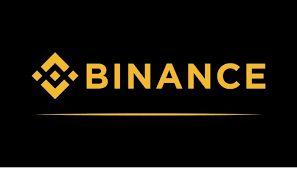Nested exchange threat and Binance’s measures to manage them

It is no news anymore that nested exchanges are preferred by the masses due to enforcing minimal Know – your –customers(KYC) and anti-money laundering(AML) requirements.
Maybe operate an anonymous life off the grid, or even something worse than that, this setup is really up to something dubious. Below are the ways how nested exchanges work:

- Person A visits a nested exchange and decides to trade ETH for BTC
2. Person A deposits the ETH on the nested exchange.
3. The nested exchange sends the ETH to their account/wallet on the host exchange to complete the conversion.
4. The nested exchange returns the newly-converted funds to person A and the trade is complete.
Nested exchanges can look just like your traditional crypto exchange, some may have a false user interface, but this is less common. Customers will know the nested service they are using but they will be ignorant of the host exchange it’s operating on. If you want to avoid nested exchanges and all the associated risks, we recommend using a regulated, centralized exchange or a nested service that is legally compliant with proper KYC and AML procedures.
It’s a telltale warning sign if your crypto exchange requires little to no verification checks or trading limits. If you suspect your provider is a nested exchange, you can always use a blockchain explorer to track if your funds came from a wallet on another exchange.
The significant risks with these services are the risk of inadequate supervision from the host exchanges. You can imagine entrusting your fund into the hands with minimal security, you are taking on more considerable danger. Most bad actors deliberately use all this to bypass the AML\KYC procedures at the host services. If you are using nested exchanges for your day-to-day transaction you may be funding terrorist activities or criminals. In that case, the nested exchange could be subject to law enforcement takedowns. Your funds could be confiscated or blocked indefinitely, depending on the jurisdiction and duration. If law enforcement has reason to believe that a nested exchange is conducting an unlawful operation, and can take legal action against it, the service, and its assets, may be frozen and/or seized. There are several reasons why law enforcement may take this action, but the user-side concern should be that their funds can end up being irrecoverable due to the legal action against a service. Even when they are recoverable, the effort could be burdensome in regards to time and financial resources.
Most of the time, the host exchange contacted the customer of the nested exchange and of course, this is done in all situations besides the nested exchange. For Example at Binance, they regularly audit their business and personal accounts that appear to be operating a business. This auditing includes risk and danger scoring and flow of fund analysis. they also implemented the TRM Labs chain Analyser, which is an industry-leading security tool that identifies nested services living inside a micro exchange.
Due to all this, Binance as an industry leader has a responsibility against bad factors and to safeguard the integrity of the crypto ecosystem.

Cryptolifedigital is a cryptocurrency blogger and analyst known for providing insightful analysis and commentary on the ever-changing digital currency landscape. With a keen eye for market trends and a deep understanding of blockchain technology, Cryptolifedigital helps readers navigate the complexities of the crypto world, making informed investment decisions. Whether you’re a seasoned investor or just starting out, Cryptolifedigital’s analysis offers valuable insights into the world of cryptocurrency.








